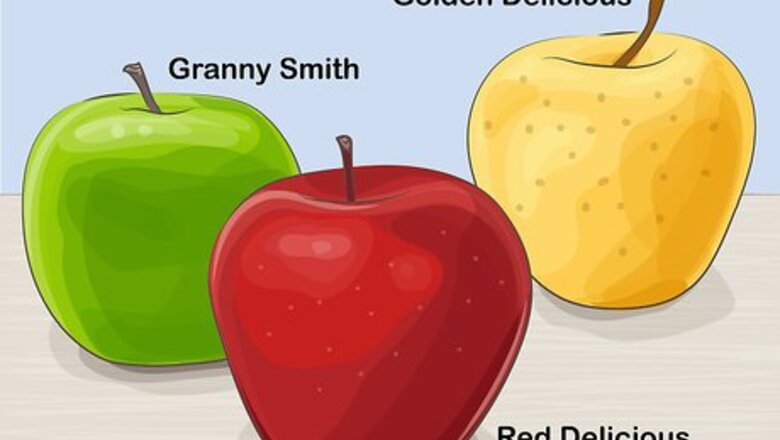
views
Identifying Apples Visually

Inspect the color of the apple. The coloring on the skin of the apple can give you many hints, and sometimes even the name of the apple itself. Colors normally include greens, yellows, reds, and red-oranges. Many shiny, dark red apples that are bought from grocery stores and markets are Red Delicious apples. Bright green apples with a shiny skin might be Granny Smith apples. If your apple is a pale-looking yellow or a cream color, it could be a Golden Delicious!
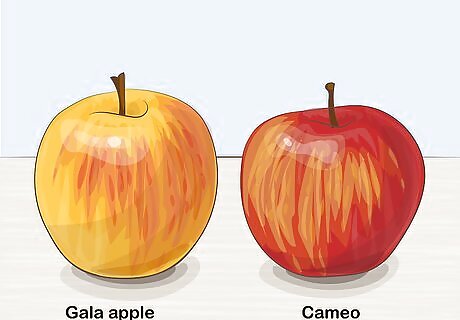
Pay attention to the pattern on the skin of the apple. Like colors, the pattern will help you identify what kind of apple you're having. Patterns, also known as textures, can be streaked, spotted, blushed, smooth, russet, or uniform. If your apple is red with some yellow streaks or spots showing through, it might be a Cameo or Jonagold apple, and if it has more yellow than red, it could be a Gala apple.
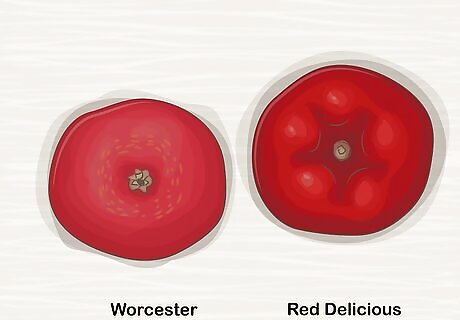
Look at the “eye” of the apple. The bottom of the apple, where the flower used to be, is called the eye of the apple. The eye is identified as opened or closed, and it may have some markings that will give you a hint to the variety of the apple at hand. For example, the Worcester apple has a shallow eye, with beaded skin markings. Gala and Red Delicious apples have very similar eyes, with a few bumps surrounding the bottom of the apple.
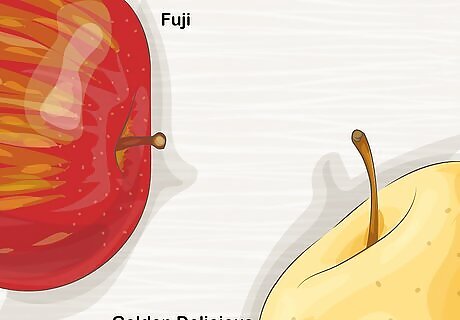
Examine the length and width of the stem. Many popular apples, such as the Golden Delicious or the Granny Smith, will have long, thin stems. There are some exceptions, however, such as the Fuji apple, which normally has a small stem or none at all.
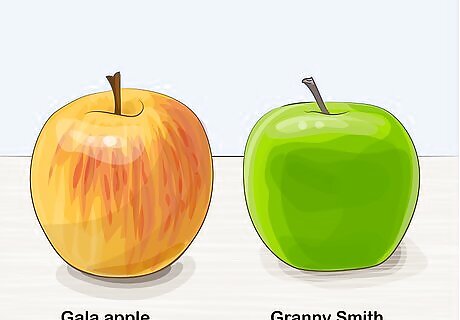
Note the size of the apple. Although size can vary due to growing conditions, it can tell you what the apple can be used for. Apples for cooking are normally larger, while dessert or baking apples tend to be smaller. For example, the Granny Smith is a great baking apple, and it tends to be smaller in size and weigh less. The Gala apple is tall, large, and great for cooking or eating raw.
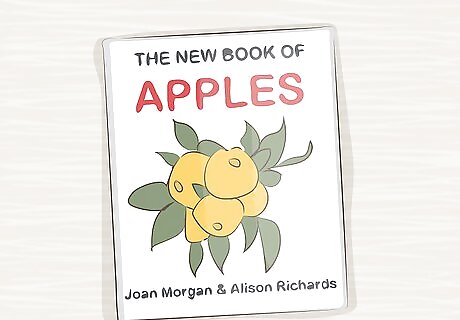
Consult outside resources like books and websites for help with identification. Books such as The New Book of Apples by Alison Richards and Joan Morgan can assist you by providing overviews of different varieties of apples. One benefit of using an online resource is that the information is constantly updated as time goes on.
Tasting Apples
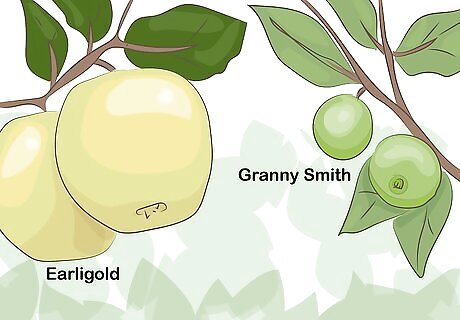
Make note of when the apple becomes ripe. You can narrow down what kind of apple it is by marking when it becomes ripe. For example, in the Northern Hemisphere, if an apple becomes ripe in August like the Earligold apple, it is an early apple, and you can rule out all apples that become ripe later in the season. Fuji and Granny Smith apples become ripe later in the season, around the end of October in the Northern Hemisphere.

Cut the apple in half across its length and width. Inspecting the cross sections of the apple will show you what the core looks like. Some apples, such as the Discovery apple, have symmetrical cores. Others will have a distinctively shaped core that can help you narrow your search. For example, the Wealthy apple has a symmetrical core when cut in half. This means that both halves of the core will look the same when the apple is cut down the middle.

Taste one of the sections of the apple, including the skin. The taste of the apple can be a surprising indicator of its variety. The appearance of the apple is sometimes an indicator of its taste, but not always. Some apples with the same coloring can taste very different. Some apples are very sweet and might even taste like other fruits, such as strawberries. Fuji, Gala, and Cameo are great examples of sweet apples. Others, like the Granny Smith, are incredibly sour or tart.
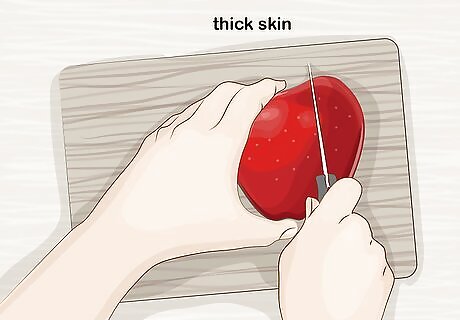
Pay attention to the skin of the apple. When you're cutting or biting into the apple, you might notice that it's difficult to break the skin that protects the apple. The thickness of the skin can also indicate the type of apple. An apple with thick skin is normally not good for cooking or baking. For example, Red Delicious apples have a very thick skin, which makes them best for using in salads or eating raw.

Go to a local apple festival to meet apple experts. Apple festivals normally occur in the fall, near harvesting season. If there's a festival near you, you will be able to find a large number of apple enthusiasts and experts who can help you taste and experience different apples, or potentially identify an apple that you can't. Visit some of the stands and ask if they can help you find an apple variety that fits your needs, whether that's cooking, baking, or just a snack with lunch. If you have an apple that you can't identify, someone at the festival will probably be able to help you find a match.

















Comments
0 comment